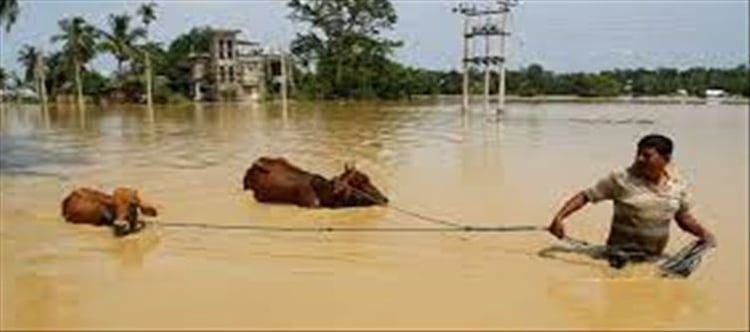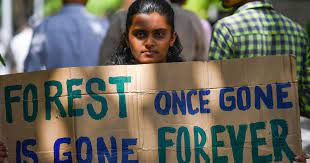
As a result of the increased temperature due to climate change, on the one hand the icy rocks of both the poles are melting and on the other hand the third pole of the earth i.e. the Himalayas, the icy region of the Hindukush ranges is also shrinking. Glaciers are melting all over the world, as a result the sea level is also rising.
According to an estimate, after a few decades, due to the rise in sea level, a large part of India's two major cities kolkata and mumbai will be submerged in the sea. According to another report, soon lakshadweep may become the first region to face India's 'climate change refugee' crisis.
.jpg)
Due to the rising temperature, there will be changes on a large scale around the world including india, which are also visible. Climate change is also a major reason behind the recent floods in Hunza in Gilgit-Baltistan, pakistan and the eruption of the Shispar Glacier.
If attention is paid to the report of the IPCC (Intergovernmental Panel on Climate Change), which has verified the concept of climate change, it has been clarified that due to climate change, the increase in river, coastal and urban floods will lead to massive infrastructure, livelihood and settlement. Change will come.
.jpg)
Recently the IPCC has published the second part of its Sixth Assessment Report on 28 february 2022 which focuses on the impacts of climate change on ecosystems and human societies. Expressing concern over the rising temperature, the report said that if the temperature rises by 1.5 degrees Celsius compared to the pre-industrial period, then 14 percent of the species will be threatened with extinction. At the same time, with an increase in temperature by 3 °C, this risk will increase to 29 per cent and at 4 °C to 39 per cent. With every degree of increase in temperature, the risk associated with climate change is increasing and the devastation caused by it will only get worse.
According to this report, a large population of the world living in cities is at risk due to climate change. People's lives are in danger as well as a huge population will be trapped in the quagmire of poverty. According to the report, a 2 degree Celsius increase in temperature will force South Asia and sub-Saharan Africa and small developing island countries to face severe food shortages and malnutrition. Anyway, these areas are already facing poverty. I have already mentioned above the condition of the countries of Horn of Africa, what situation they are going through.
.jpg)
In the coastal areas of island countries and other countries, the crisis is even bigger and there is a danger of their drowning. Anyway, due to the storms that come every year, many million people are forced to live in exile. This is the situation in india as well.
India and the challenge of climate change
If we talk only in the context of india, then our country is very vulnerable to climate change. We can also see its results from last few years. Avalanches, extensive damage due to frequent storms, floods, forest fires are all the result of climate change. Due to which the lives of countless people were lost. Many species were endangered due to forest fires.
.jpg)
In india, trees are being cut indiscriminately in the name of development. The forests are getting cleared and the concrete forests are getting thicker, while they have turned into heat islands. noida is a better example of this in the National capital Region, where buildings are visible everywhere and tree trunks are barely visible, due to which the rate of reflection (albedo) of temperature has also been affected and the absorption of temperature is increasing.
The problem is not limited to this only.
Polluted air and water is also a very serious threat in India. Despite all the claims and promises, while the government has failed to clean the rivers, they have not raised any flags to prevent the air from becoming poisonous.
.jpg)
People in delhi and adjoining states are forced to breathe poisonous air. According to the World air Quality Report 2021, delhi is the world's most polluted capital for the fourth year in a row. According to the same report, out of the 15 most polluted cities in Central and South Asia, 11 are in india alone.
It is not that governments are not concerned about the environment. Governments around the world including india are making efforts for this. india has done very commendable work in the field of renewable energy, for which it has also been praised in forums around the world.

A wide campaign is being run by the present government in the country regarding cleanliness, but due to lack of public participation, it is not getting as much success as it should. However, the government is also unsuccessful on many fronts. Take for example the issue of cleaning rivers.
Amidst all the government's promises and claims, the condition of the filth in the rivers remains the same. Somewhere in this, the earning of commitment in the efforts of the government is visible. The responsibility of the government for all this is as much as that of the common people. It is very sad that in a country where there has been a great movement like Chipko to save the trees, the people of the country where nature is worshiped have become very indifferent about the environment.




